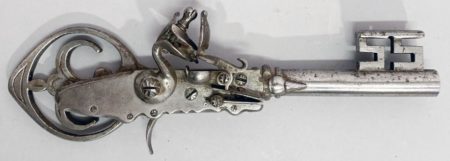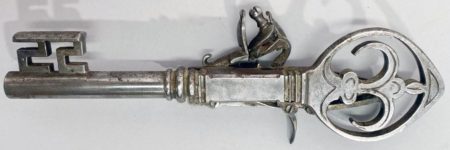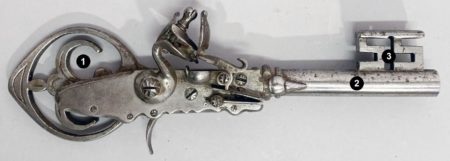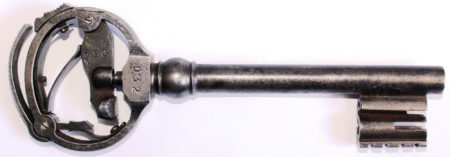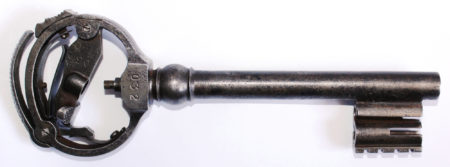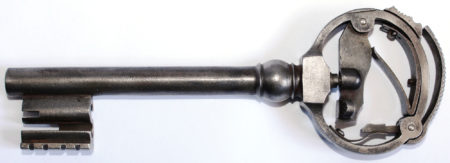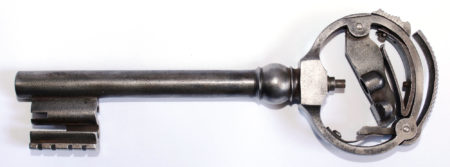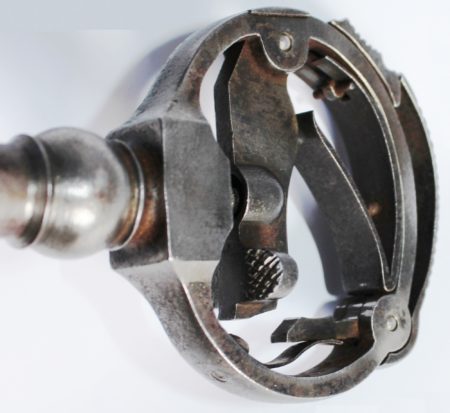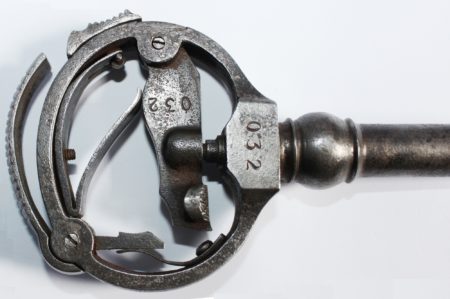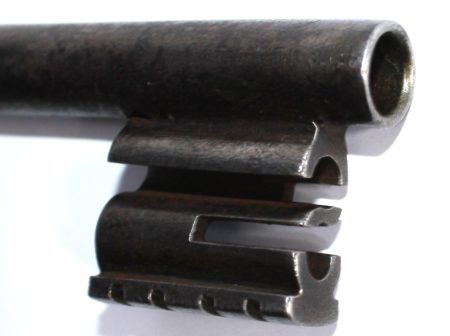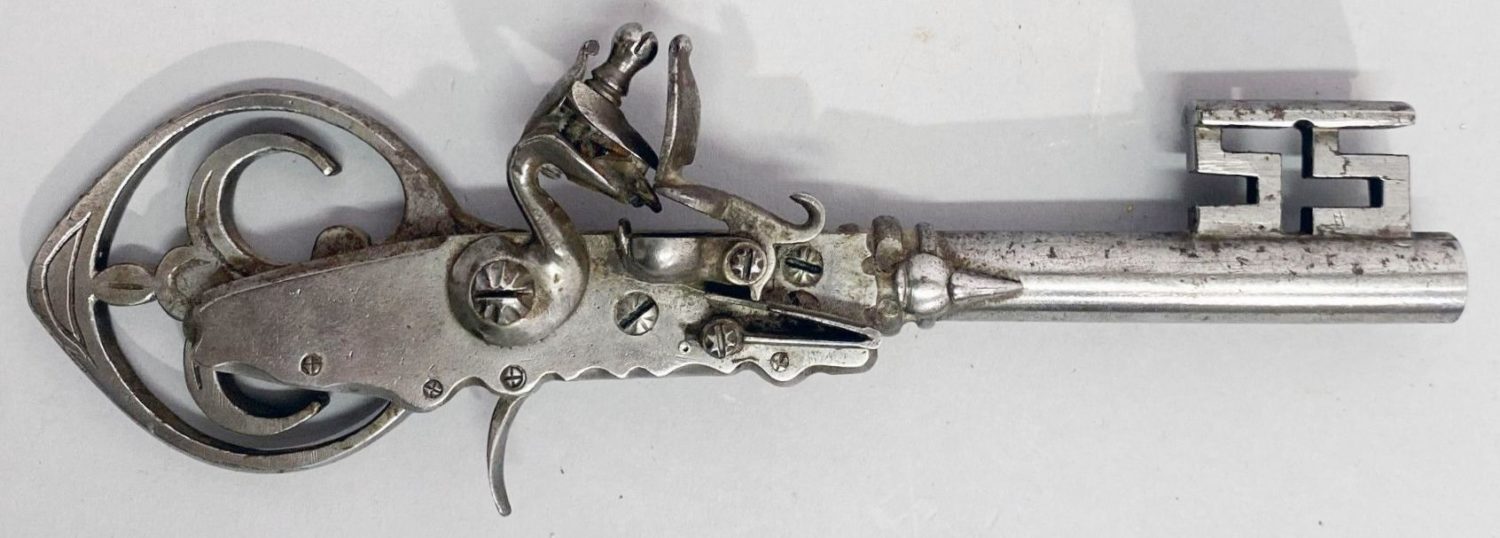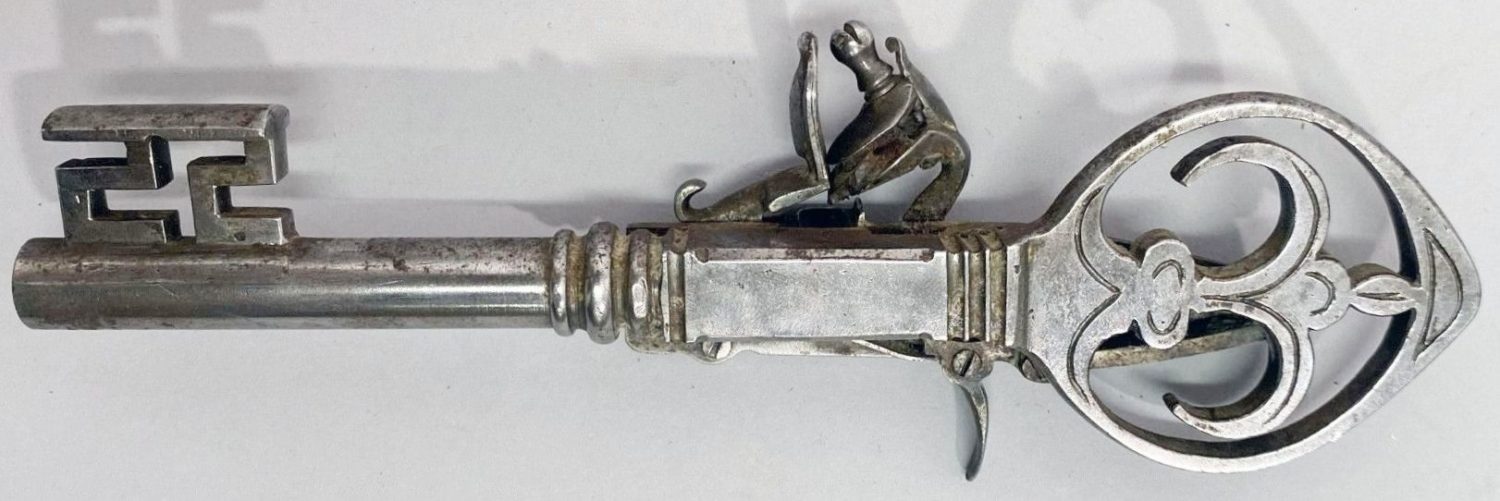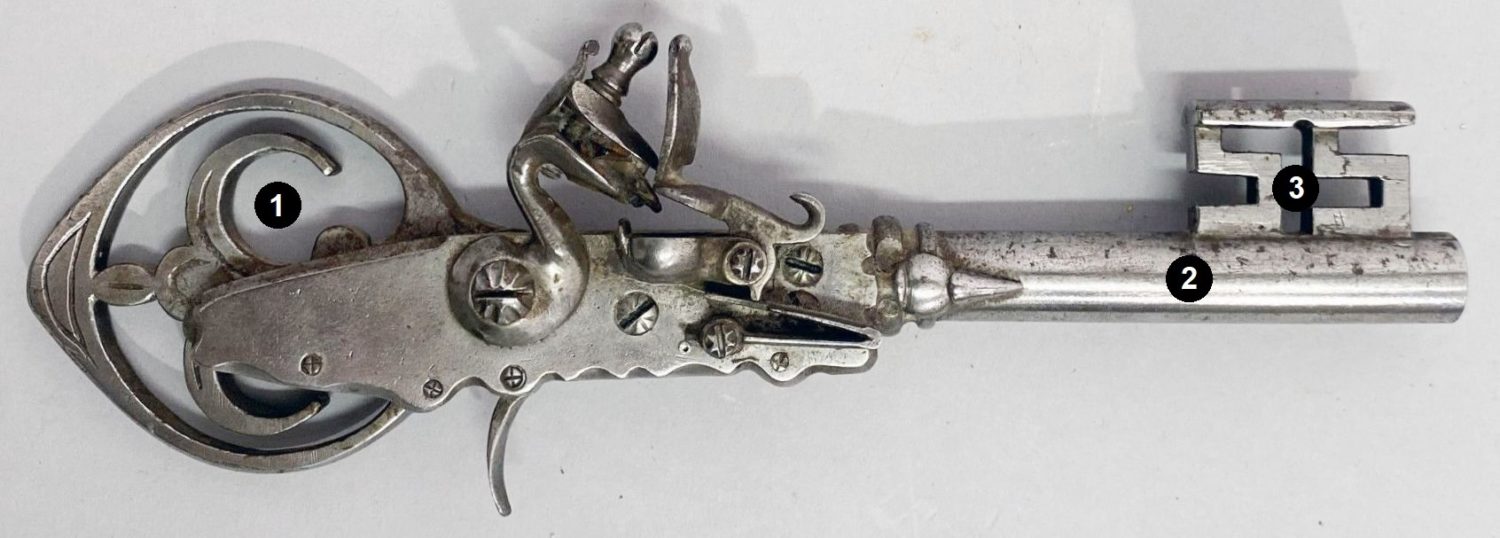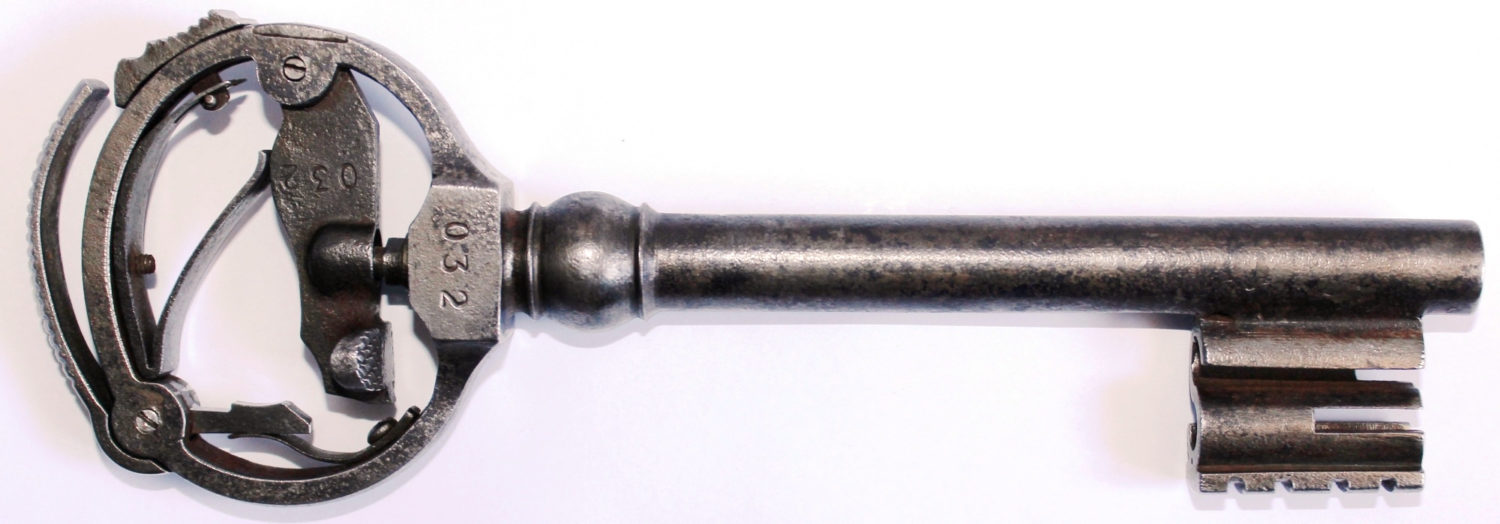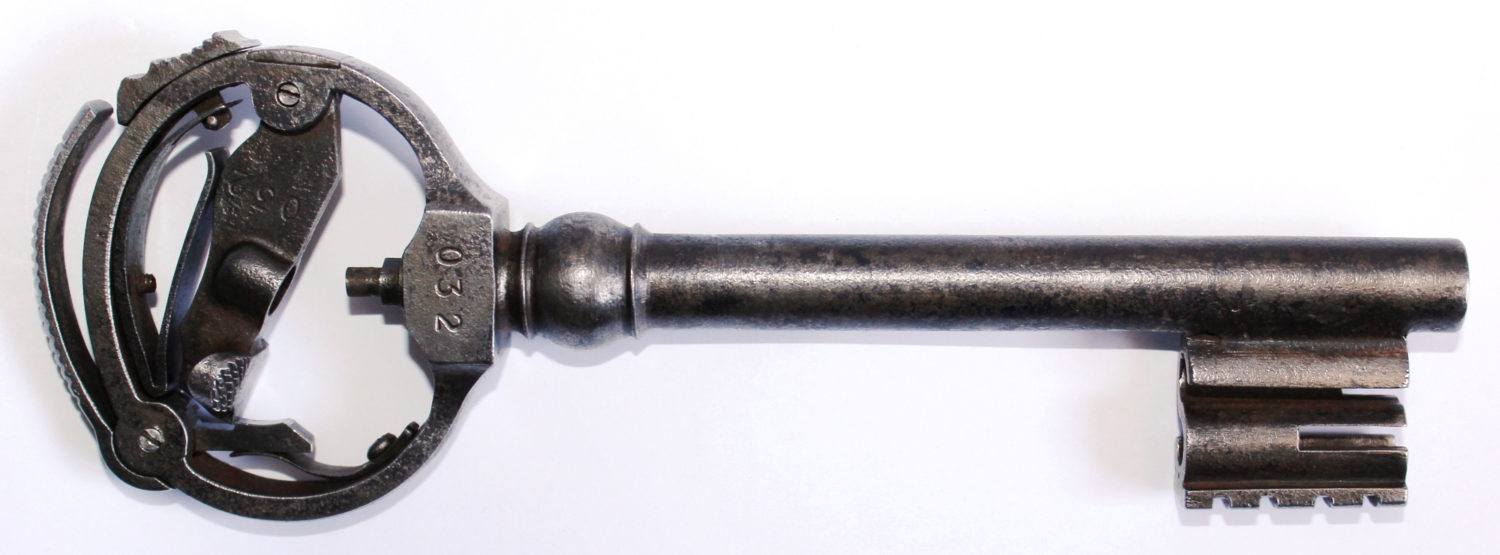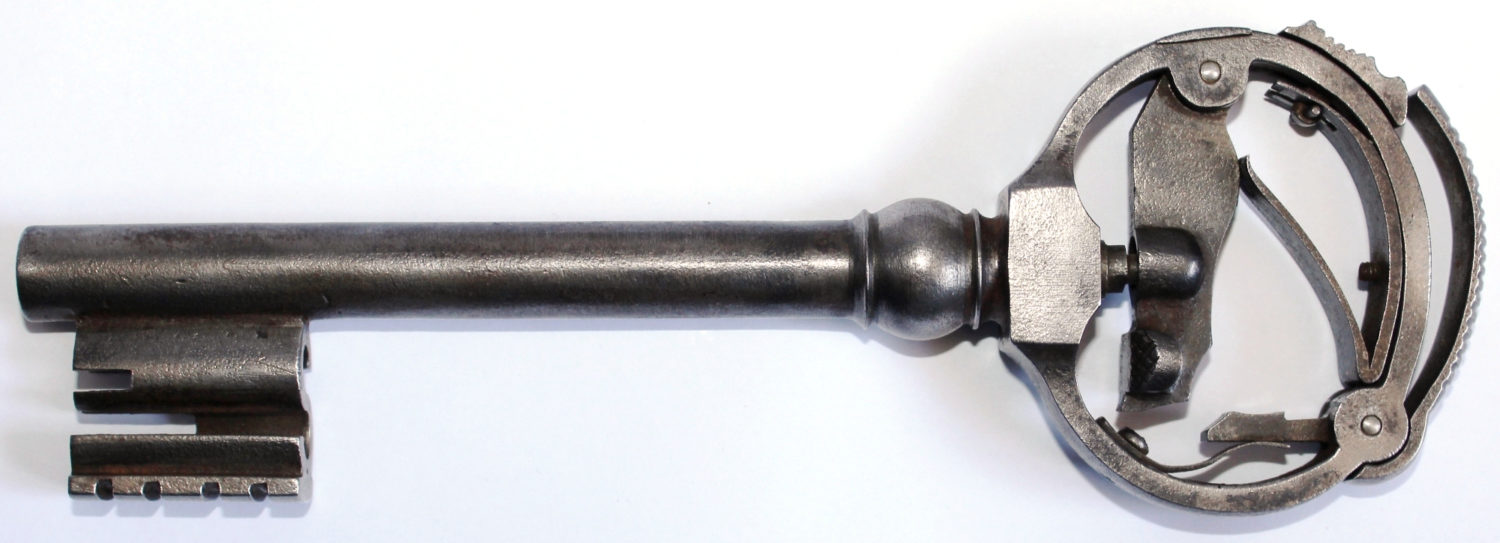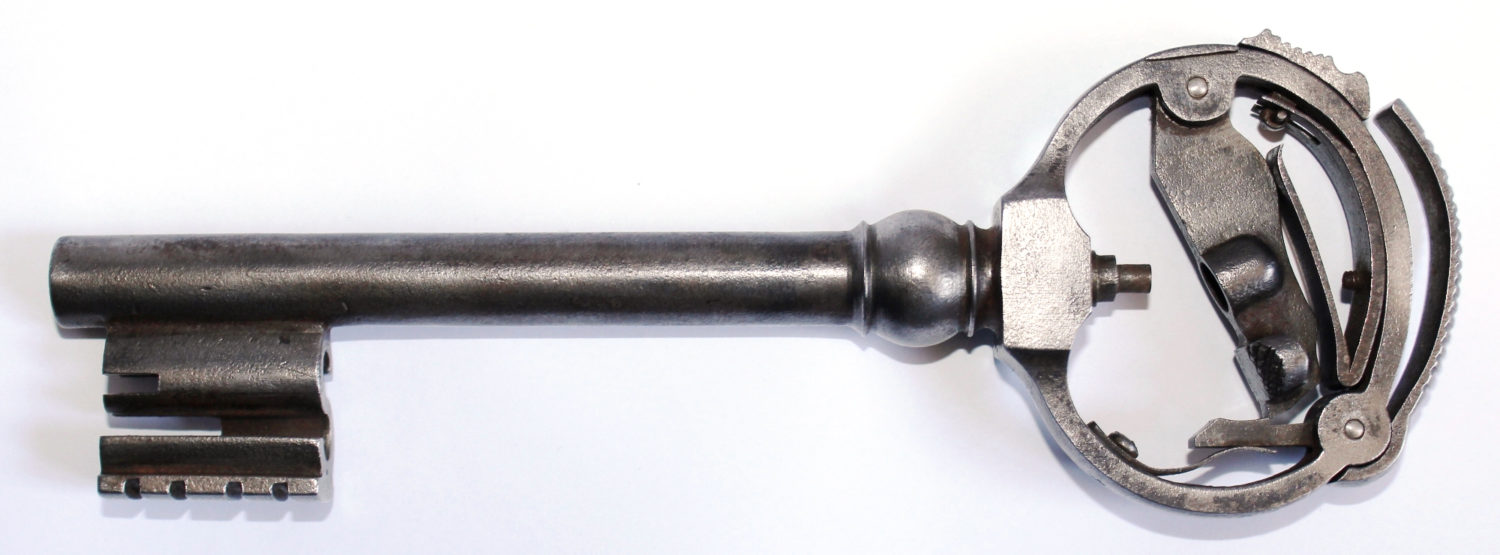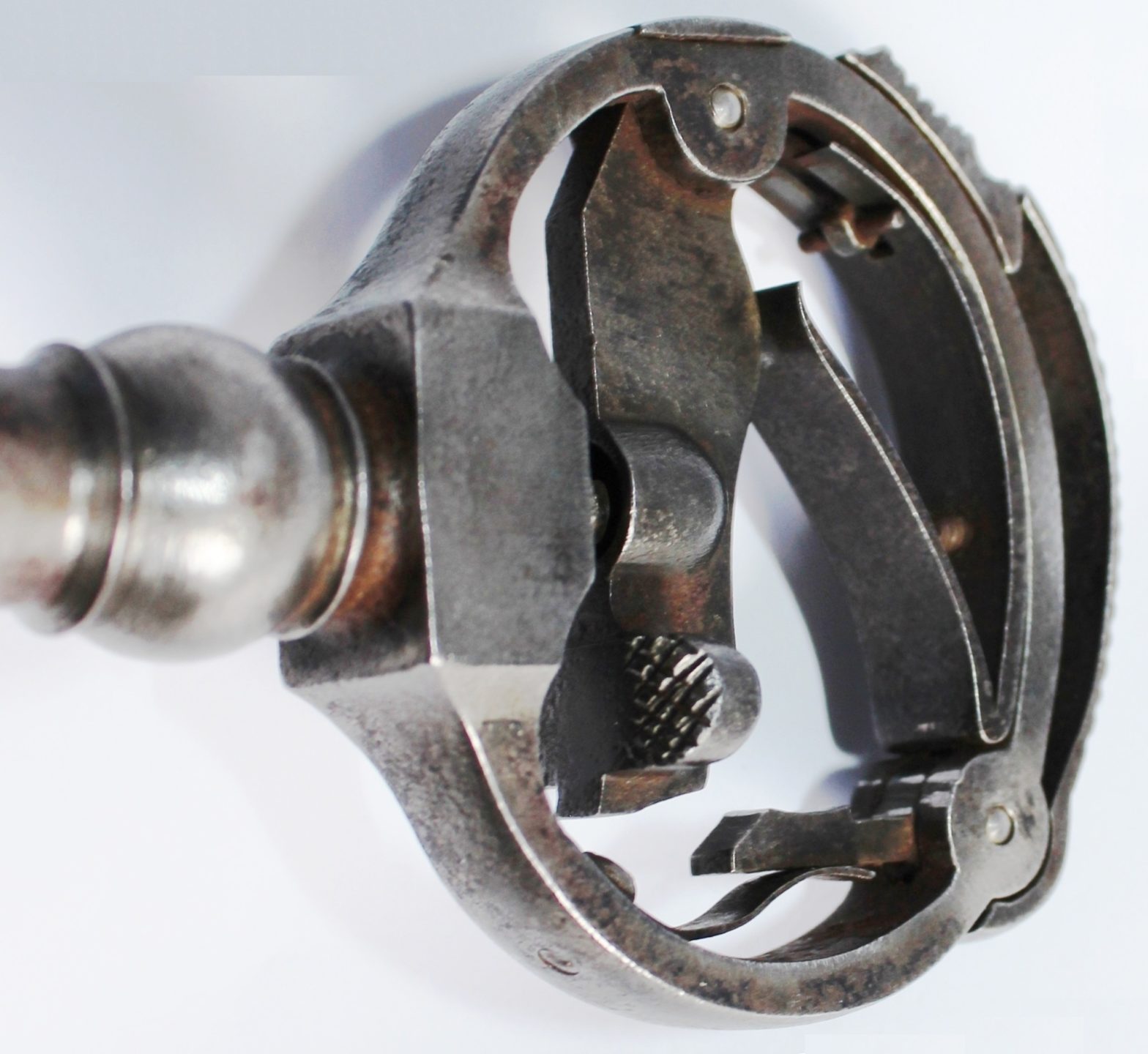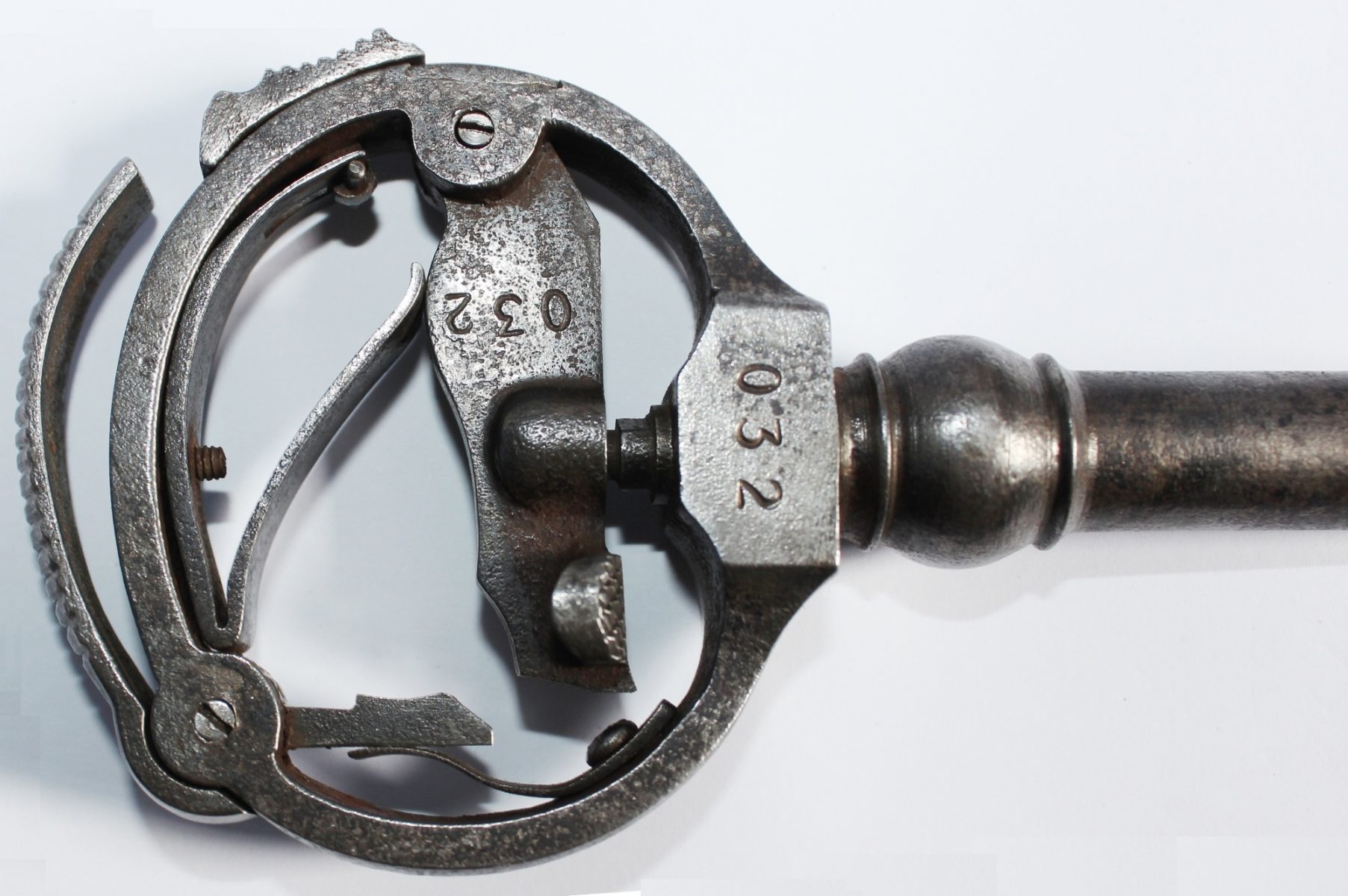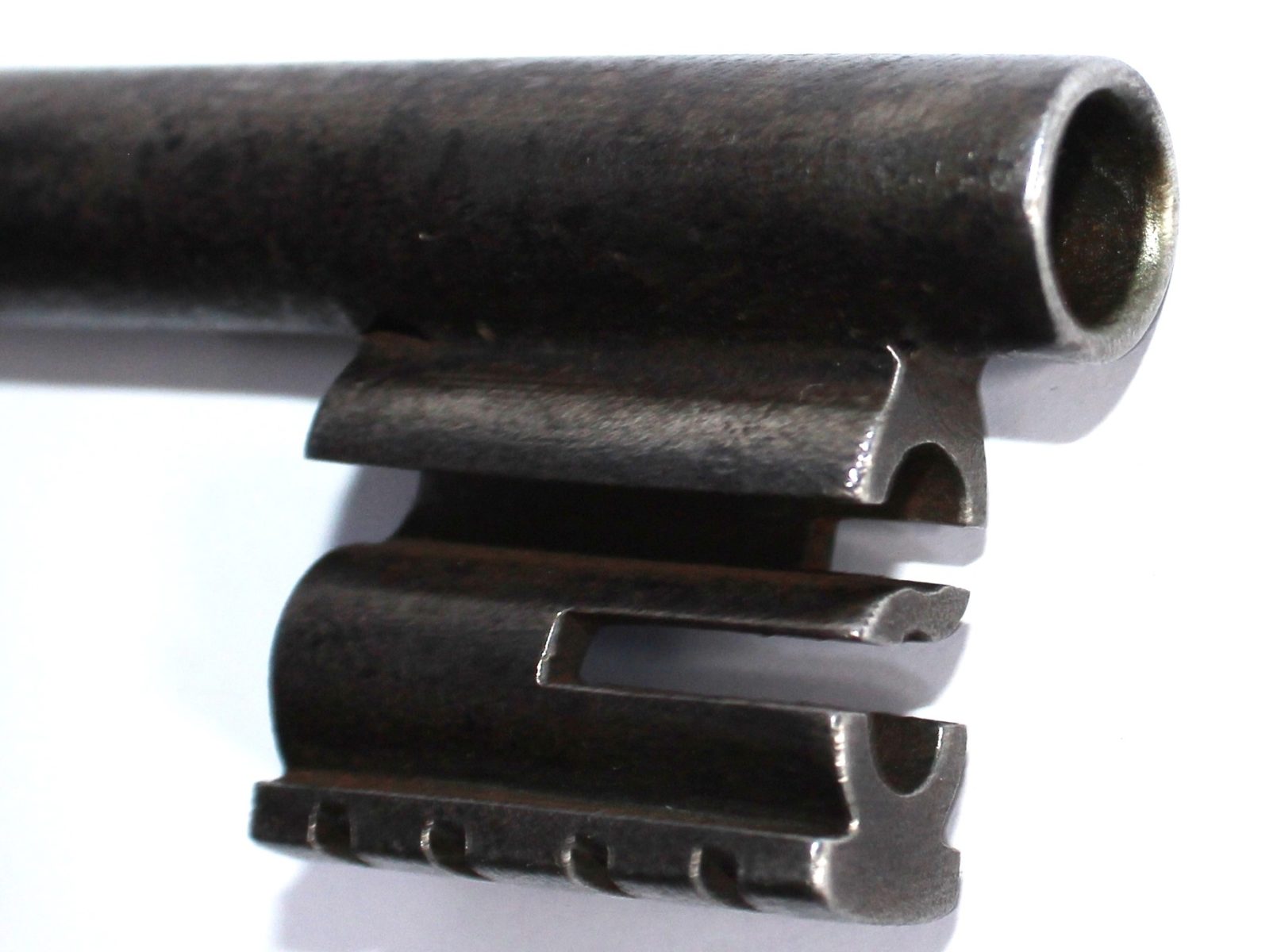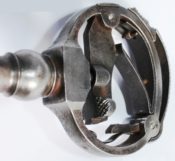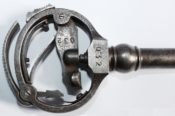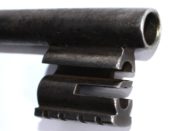Key-shaped gun

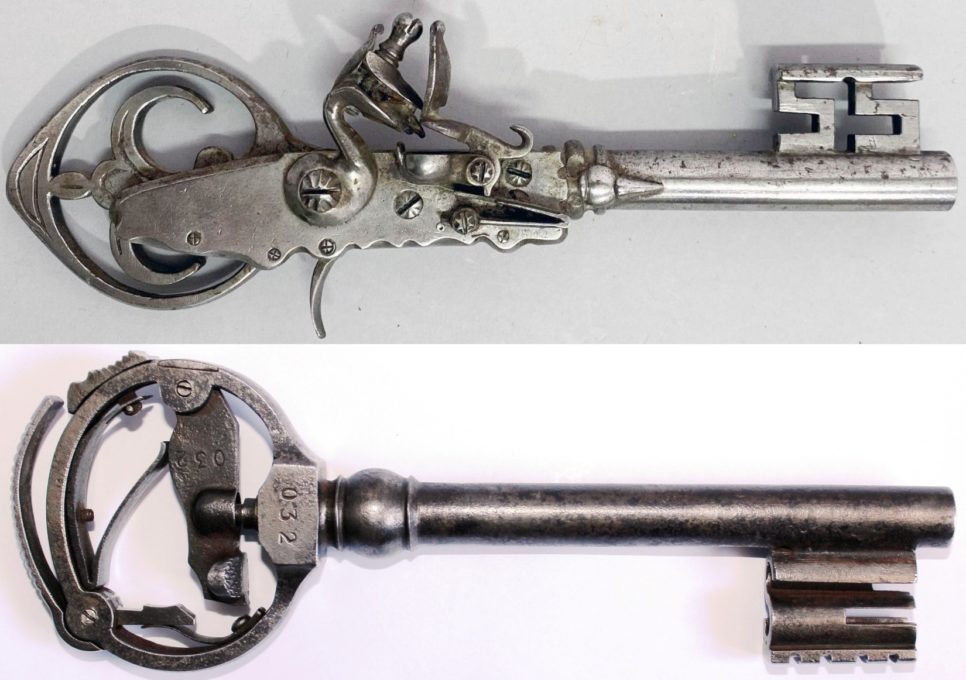
Insecurity between humans has always been a concern and daily violence has often been a reality since the dawn of time!
The possession of wealth has always aroused covetousness and the powerful bourgeois classes of society have always needed to protect their property! In my early years, this very explicit maxim was often quoted:
“The aristocrat fights for what he is, the bourgeois fights for what he has! »
Before the detestable appearance of virtual money, revolutionary assignats (source of bankruptcy), paper money (sensitive to vermin and decay), a rich person necessarily held his fortune in the form of precious metals with shimmering sparkle (gold and silver), precious multicolored stones, subtly crafted jewelry, coins tidy in reels, or more surprisingly, from intoxicating spices to musky fragrances. Let us remember that spices were worth more than gold until the end of the renaissance (pepper, clove etc.). And only the most elementary humility formally forbids me to speak here of the checks whose value similar to orvietan were once sold by the smooth talkers from trading fairs!
Indeed, the richer one was, the more solid and bulkier the chest for the preservation of the oh-so-precious, heavy and yet cumbersome riches, and therefore the greater the greed of the purse-cutters!
The smiths responsible for the construction of safes at this age were accomplished craftsmen and so did the locksmiths. The professional proximity between locksmiths and gunsmiths was close. Most of the time, in the countryside the blacksmith of the village was also by necessity the locksmith. Thus, he used to repair weapons and mechanisms of clocks.
When a wealthy client ordered a safe or a manor door-lock, he sometimes offered to optimize the key by equipping it with a percussion mechanism (side-plate or concealed hammer) to transform it into a defensive firearm. The bow of the key (1) is suddenly promoted to the more flattering function of the butt of a pistol and the shaft of the aforementioned key (2) holds the valorizing and martial purpose of the barrel pistol by its appropriate shape. The functional key ward (3) can serve more modestly as a circumstance front sight.
Here, we present a flintlock key-shaped gun of the Louis XVI era. Its mechanism is close to a boxlock pistol except for specific holes drilled through the plate of the lock to receive the trigger screws and trigger return spring. We can only note and conclude that this lock mechanism was built specifically for this object and does not come from the scavenging of a pistol!
The highwaymen of that age sowed terror in the countryside and used great violence and brutality to rob their victims. However, they were not necessarily skilled technicians, and they did not have advanced tools to quickly force the locks. Pragmatically, they preferred to force the unfortunate victim to open the safe or the door itself.
Their victim grasped the key and concealed its bow into the palm of his hand. Thus, the trigger mechanism went unnoticed, and then woe to the too confident scavenger who saw himself shot at close range! Then, the bourgeois had to take advantage of the confusion to seize a sword or to flee his executioners! Given the isolation and slowness of movement, people could often only rely on themselves to self-defend, the marshal often residing several miles away!
This kind of concealed weapon is uncommon nowadays. At the time they were already quite rare, because such weapon cost the price of a pistol. Also, the idea of a one-shot pistol key did not necessarily appeal to the owners who could for example prefer a pair of two-shot pistols that they took with them during their travels to benefit from a greater firepower!
The second key-pistol at our disposal works like a percussion cap pistol and we can date it without being too bold from the second third of the 19th century.
This key offers the particularity of containing the entire mechanism inside the bow which makes its concealment easier and avoids catching the fabric of the pocket as it must be brandished quickly. The percussion is axial. The cross section of the bow and shaft acts as a breech that hold the nipple. The caliber of the weapon is around 10mm allowing to charge it either with a single round bullet or with “dragée” as they said at the time in France. Behind this last name hide 5 to 6 balls of lead more than suitable to stuff in a beautiful way the bowels of the scoundrel who wants your savings. Such an injury, if it was not necessarily lethal on the spot, led to a long and painful agony. The robbers aware of this hesitated to insist when they understood that the innocent key that was brandished under their noses was in fact something else!
The height of refinement, our pistol of circumstance is endowed with a safety blocking the trigger. The aforementioned trigger is located on the back of the bow in the form of an articulated lever that releases the trigger if pressed with the palm of the hand. Then, the sudden release of the main spring produced the percussion of a primer by the hammer. Our copy bears the number “032” stamped on the cross section of the key and on the hammer. This numbering suggests the manufacture of a small series. This marking will also serve as a winding mark when, after adjusting all the parts and adjusting the steps of the latter, the weapon is disassembled for quenching operations to harden the hammer and sear notches. It is imperative to reassemble the right parts on the right key because in manual manufactures, carefully adjusted parts are not interchangeable!
The temptation is great to shoot with such an antique weapon. The firing of a lonely primer is done without any spitting. The manufacturer has taken good care to provide the hammer with a deep counterbore at the level of the percussion head so that the latter caps the primer entirely to contain the gases that may create lesions to the palm of the hand!
With 0.5 grams of gunpowder and a few grams of hunting pellets all stuffed with a nasty sheet of newspaper, an enlightened amateur will certainly be able to find a way to have a little fun reliving the sensations of that time.
Gilles Sigro-Peyrousère
This is free access work: the only way to support us is to share this content and subscribe. In addition to a full access to our production, subscription is a wonderful way to support our approach, from enthusiasts to enthusiasts!


